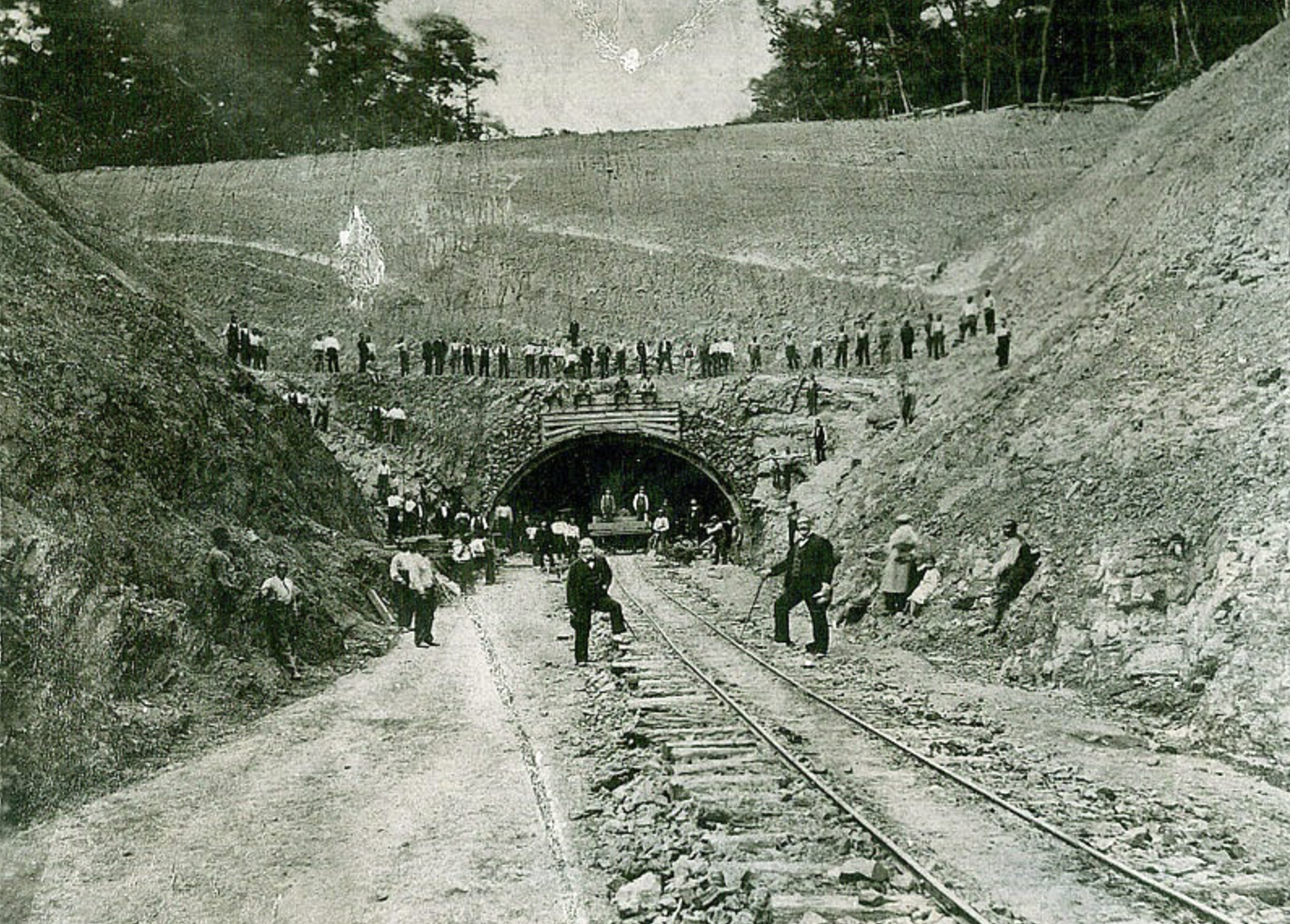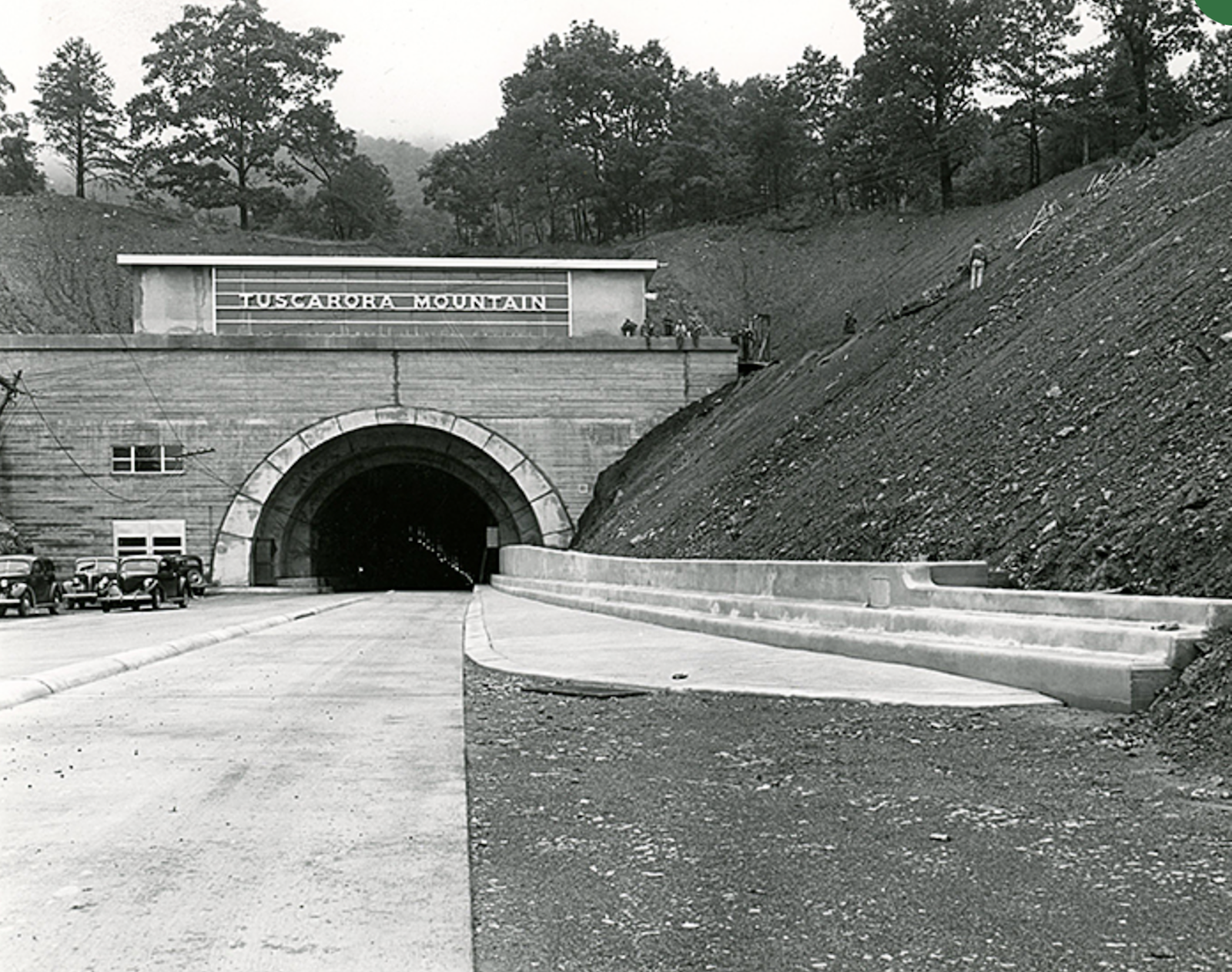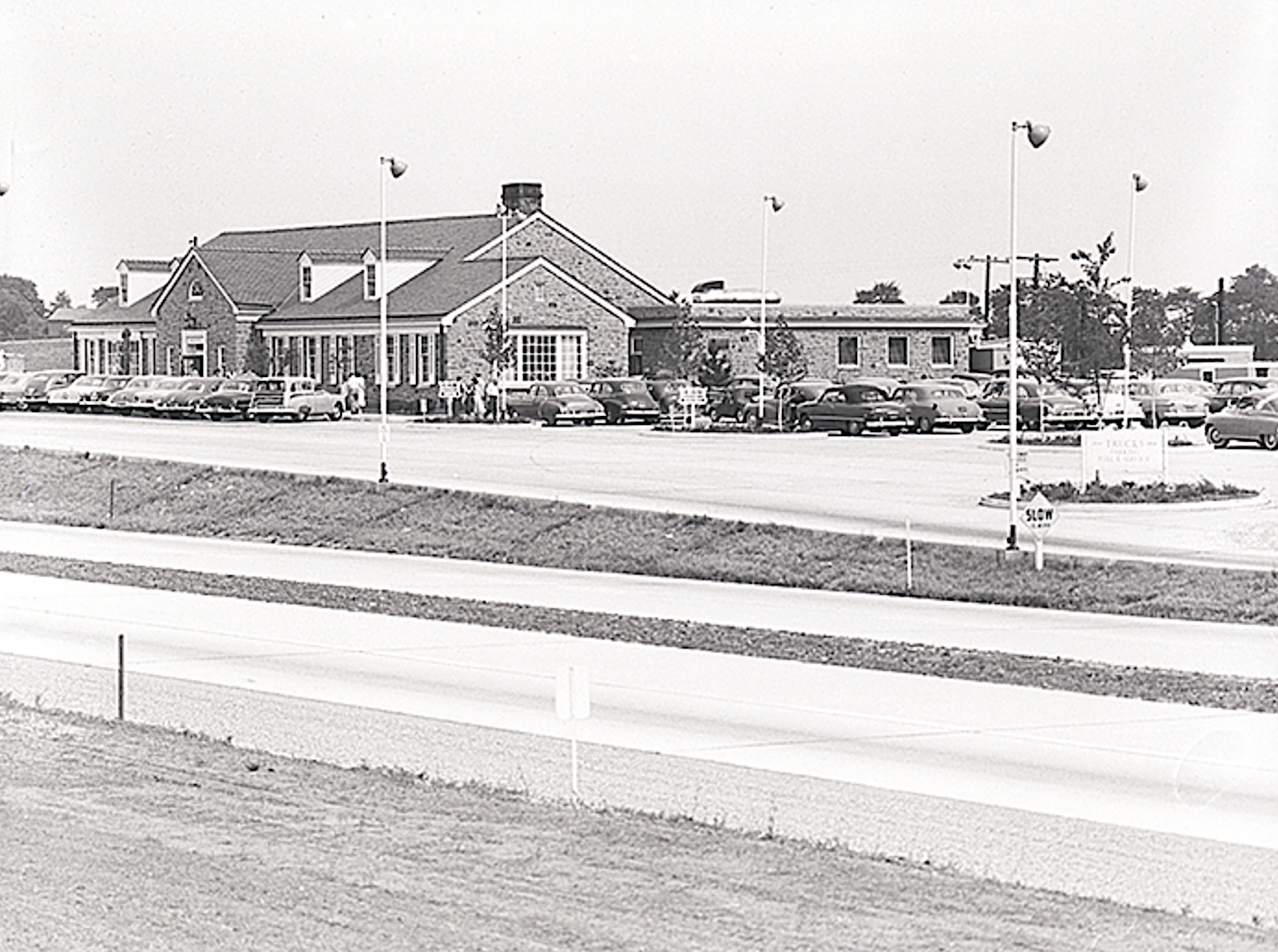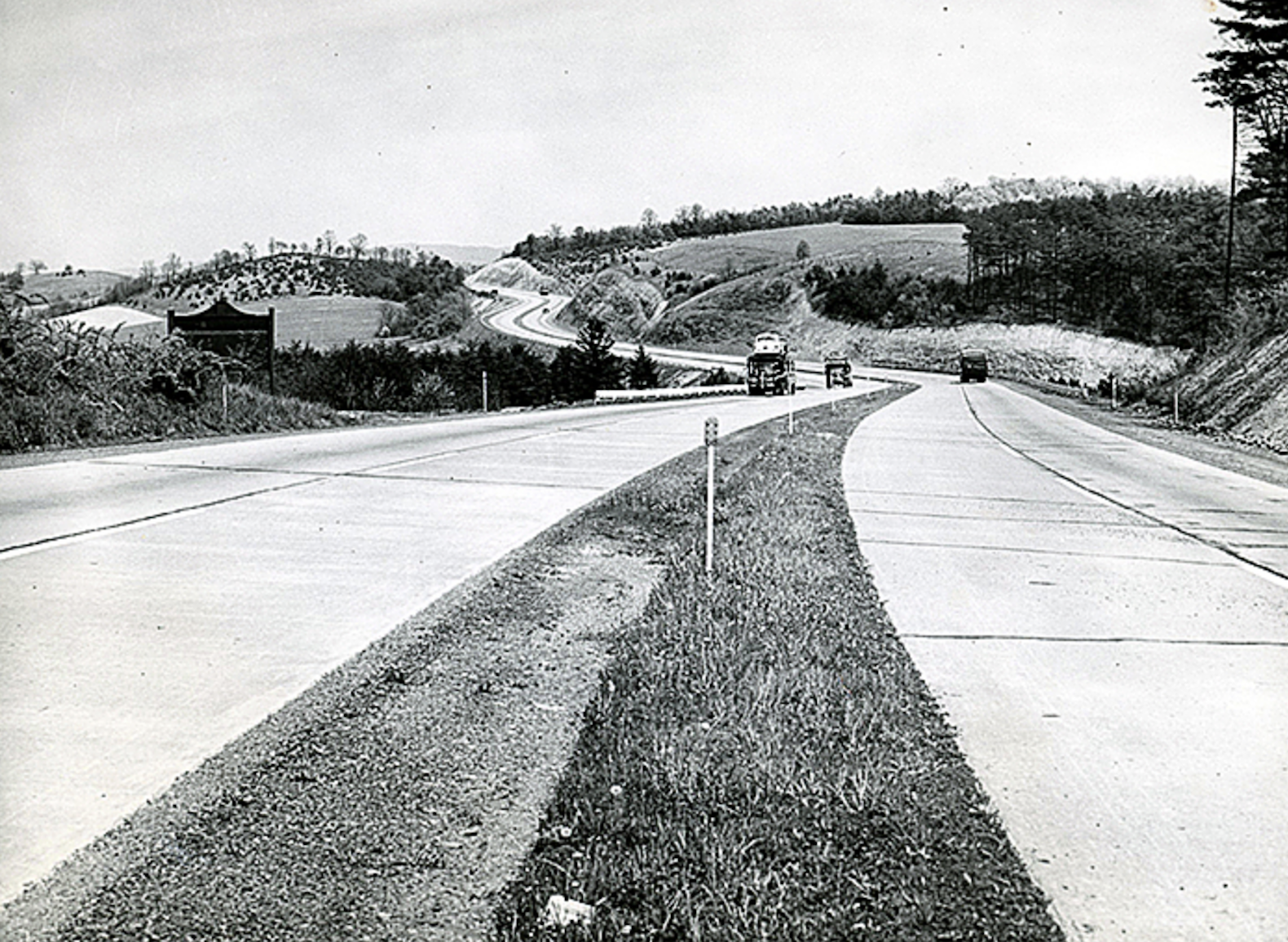It is the road that first defined what America’s superhighways would become. Its path, born in the 19th Century, would be used in the 20th to define high-speed driving in America.
It’s the Pennsylvania Turnpike. And this week in 1940, it opened to motorists. Yet its birth came as a result of a fierce rivalry.

Andrew Carnegie stands in front of a railroad tunnel in the 1880s. It would eventually be used for the Pennsylvania Turnpike in the 1930s.
Robber barons and right-of-ways
The dream of crossing Pennsylvania at high speeds had first been envisioned in the 19th century.
It’s the 1880s, and William K. Vanderbilt’s New York Central Railroad is battling a fierce rival in the form of the Pennsylvania Railroad. The monuments of their competitiveness remain intact today, in the form of Grand Central Station and Penn Station.
It’s 1883, and Vanderbilt learns of a plan by the Pennsylvania Railroad to build a route up the Hudson River. Looking to challenge their audacity, Vanderbilt allies with Carnegie Steel’s Andrew Carnegie and Henry Frick to build a railroad route across the Keystone State.
Taking control of an abandoned route across the Allegheny Mountains, Vanderbilt floats $40 million in stocks and bonds, and enlists the backing of financier J.P. Morgan, Vanderbilt contracts for tunnels and bridges to be built across the route. But within eight months of completion, Morgan withdraws his support, realizing that a war between railroads would be harmful. The route was abandoned.
A new life for an old idea
Fast forward to the 1930s, as the Great Depression has devastated the national economy. While few Americans can afford to buy a new car, the number of automobiles is growing, and existing roads prove inadequate. For those driving across Pennsylvania, their sole choice is the Lincoln Highway, America’s first national road. Known today as Route 30, the narrow road’s twists, turns, hills and traffic proved less than ideal. Something had to be done.
It was the completion of the Bronx River Parkway in 1925, America’s first expressway, that would capture Pennsylvania officials’ attention. But it would take until 1934 for them to propose the idea of the Pennsylvania Turnpike that would use Vanderbilt’s old railroad bed. Three years later, the Pennsylvania Turnpike Commission was formed to develop, operate and maintain the road. But the commission lacked funding.

Sone mountains dictated the use of two-lane tunnels, which caused massive delays. Eventually, most were expanded, while others were abandoned and the road rerouted.
Thankfully, the federal government lent a hand, eager for a public works project to employ those most affected by the tough times. The Public Works Administration contributed $29.25 million, while the Reconstruction Finance Corporation purchased nearly $41 million in bonds. But the money came with the stipulation that work had to be done by May 1940. There wasn’t much time.
In a little more than three weeks, 10,000 men were working on the project, pouring 4.3 million square yards of steel-reinforced concrete, building 114 bridges, digging out six old railroad tunnels and constructing a seventh.
A little less than two years later, on this week in 1940, the first 160-mile road section, from Carlisle to Irwin, was completed.
What they built
It was a road unlike any other in American history.

Service plazas were placed every 25-to-30 miles along the highway. Howards Johnson’s was the exclusive restaurant initially offered.
The four-lane, divided highway is 78 feet wide, and has 1,200-foot on- and off-ramps. There are service plazas every 25-to-30 miles; as well as toll booths. The road features broad sweeping curves, with no grade greater than 3%. Its seven tunnels — Allegheny Mountain, Blue Mountain, Kittatinny Mountain, Laurel Hill, Rays Hill, Sideling Hill, and Tuscarora Mountain — total more than 7 miles in length.
And like Germany’s Autobahn, which been an inspiration for the turnpike’s designers, there is no speed limit.
Of course, toll roads, or turnpikes, were nothing new. There was one running from Philadelphia to Lancaster as early as 1793, although it was later replaced by a canal. The name turnpike comes from a traveler’s initial transaction at a toll gate. The traveler pays a toll, and then the tollbooth work turns a pike, originally meaning a sharp-tipped weapon, but now referring to the toll gate.
What was new about the Pennsylvania Turnpike was its engineering and limited access. Within the first four days, the turnpike realized $140,000 in revenue.
Now that America now boasts 43,000 miles of interstate highways, the construction and completion of the Pennsylvania Turnpike, still in operation today, may not seem like a big deal. But the road served as a blueprint as the Roosevelt Administration began planning a series of high-speed, limited access highways that would become the Interstate Highway System.
Much like our federal government, the national high-speed highway was born in Pennsylvania.




0 Comments